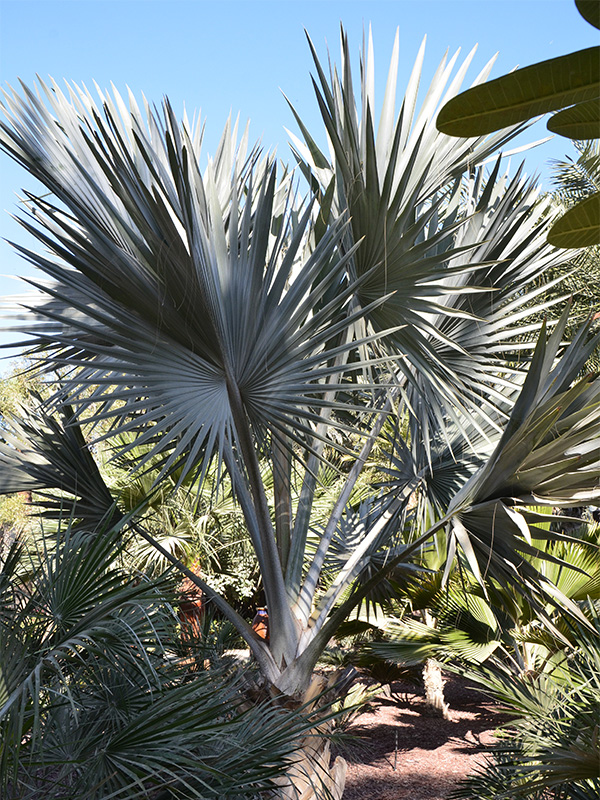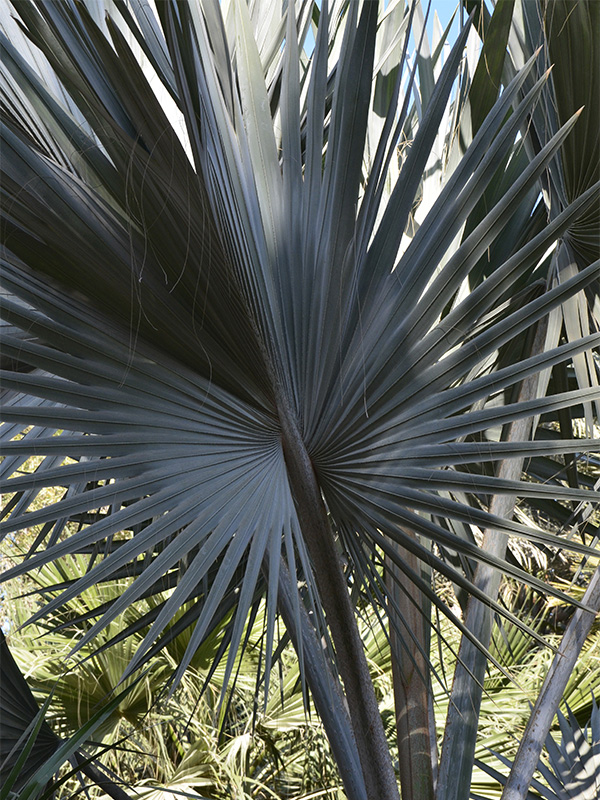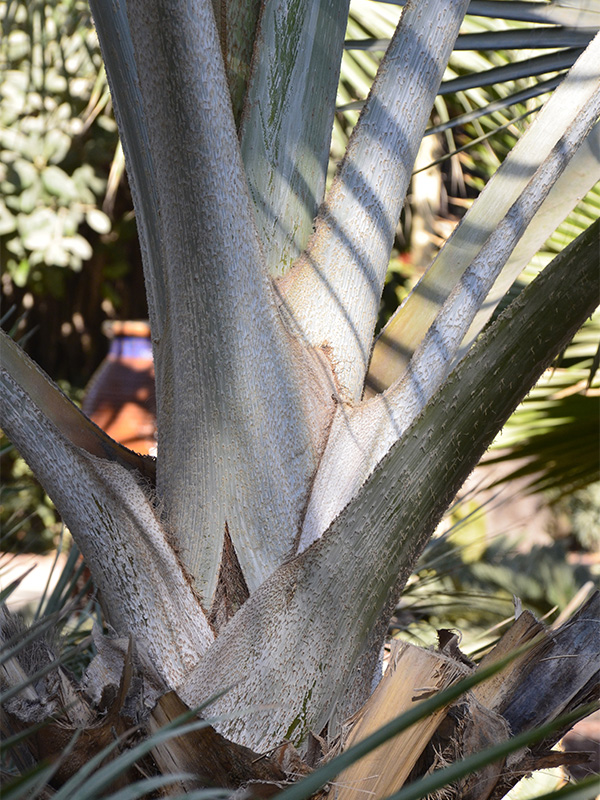| Shape | Upright and wide spreading. |
| Propagation | Seed. |
| Cultivation | Full sun. Well-drained and moist soil with a pH of 6.1 - 6.5 (mildly acidic). Drought tolerant. |
| Habitat | Open grassland, plateaux and plains. |
| Bark/Stem Description | The trunk is 30 - 45 cm wide and slightly bulging at the base and free of leaf bases. |
| Leaf Description | Almost rounded leaves are enormous in maturity, 3 m wide and deeply-divided into 20 or more stiff segments. Leaves are costapalmate, producing a wedge-shaped hastula where the blade and petiole meet. |
| Flower Description | Pendent, interfoliar inflorescences of small flowers. |
| Fruit Description | Ovoid drupe with each containing a single seed. |
| Colour Description | The bark is greyish-tan. The foliage is a green and sometime bluish-green colour. The flowers and seeds are brown. |


